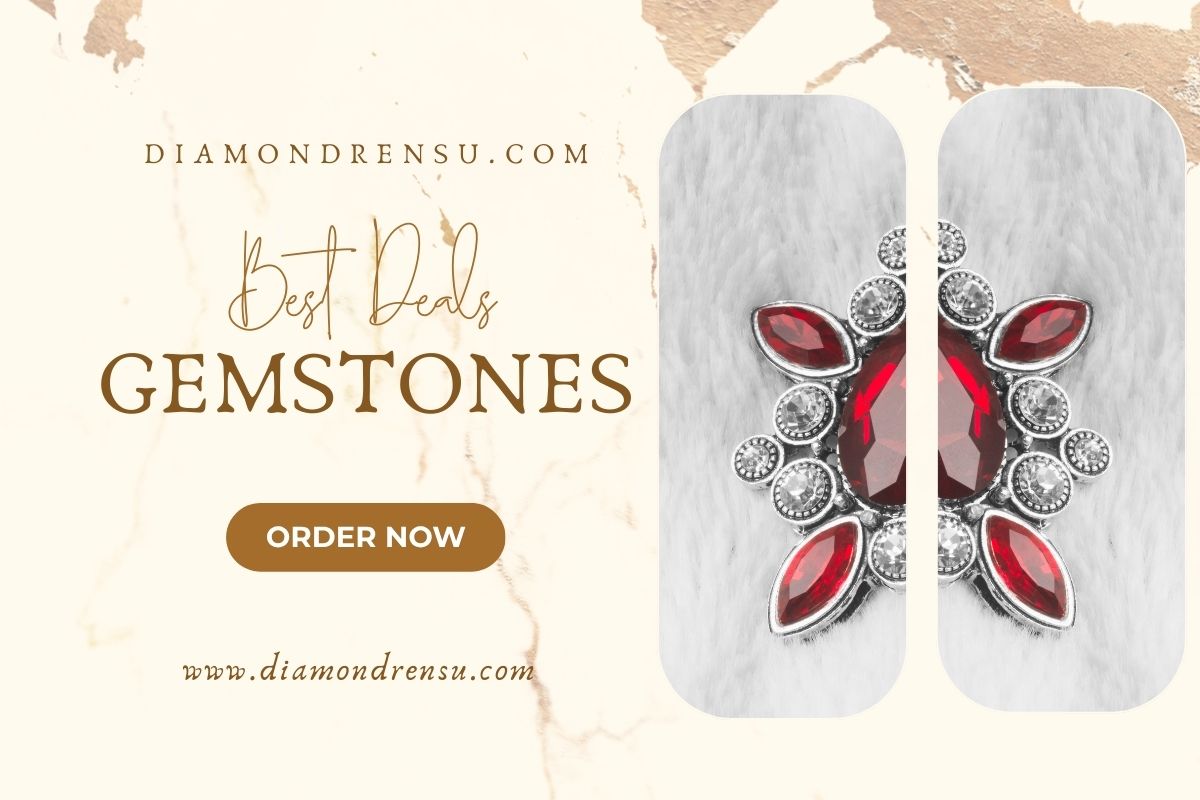
Claw Prongs vs Round Prongs: Choosing the Right Setting for Your Gemstone
When selecting a setting for a diamond ring, the prong style plays a crucial role in both the appearance and security of the stone. Two common types of prongs are claw and round prongs, each offering a distinct aesthetic and functional benefits. As an expert in jewelry design, I've noticed that claw prongs tend to have pointed ends that grip the diamond's crown, adding an elegant and sharp look to the setting. They usually offer extended coverage over the gemstone, which can provide additional security.
Table Of Contents
- Understanding Prong Settings
- Assessing Diamond and Gemstone Security
- Design and Aesthetic Considerations
- Comparing Claw and Round Prongs
- The Impact of Prong Selection on Light and Brilliance
- Practical Considerations and Maintenance
- Ring and Prong Setting Types
- Assessing Comfort and Wearability
- Cost Implications of Prong Choices
- Customization and Personal Style
- Jeweler and Brand Considerations
- Frequently Asked Questions
In contrast, round prongs feature a more subtle and rounded end that clasps the diamond's girdle. The design of round prongs is often seen as minimalist and is prized for allowing optimal light penetration, which can enhance the brilliance and sparkle of the diamond. While they are secure, the rounded nature of these prongs means they are less prone to catching on clothing or other materials, making them a practical choice for daily wear.
My analysis of these two prong types reveals that each has its distinct advantages, depending on the wearer's lifestyle and aesthetic preferences. The choice between claw and round prongs can significantly influence the overall style of a ring, and it is essential to weigh their differences carefully. Whether one prioritizes the secure grip and pronounced look of claw prongs or the sleek, light-enhancing quality of round prongs, the decision will ultimately reflect personal taste and practical considerations.
Understanding Prong Settings
In my experience with jewelry, particularly engagement ring settings, the prong setting is highly significant as it influences both the aesthetics and security of the gemstone. Prong settings consist of small metal tines—commonly gold, platinum, or white gold—that extend up from the base of the ring and secure the stone in place. My knowledge stems from a blend of professional insight and industry standards regarding these settings.
I've noticed that the metal choice for prongs is crucial. Gold is popular for its traditional appeal, platinum for its strength, and white gold for a modern touch. Engagement rings often employ these metals to create a durable and lasting grip on the stone. When examining prongs, I consider two main types: claw prongs and round prongs. Here's how they differ:
-
Claw Prongs: Characterized by their pointed tips that extend over the crown of the gem, these prongs resemble the claws of an animal. They often add an element of elegance to the setting.
-
Round Prongs: With a more subdued appearance, round prongs have a rounded tip that covers less of the gemstone's surface. They're known for providing a strong and stable hold on the gem.
Both types of prongs have their place in ring settings, depending on the desired style and level of security. I’ve found it essential to understand the distinct features and apply them appropriately to each ring design. Maintenance for both involves periodic checking to ensure the prongs have not worn down or loosened, which could jeopardize the stone's security.
Assessing Diamond and Gemstone Security
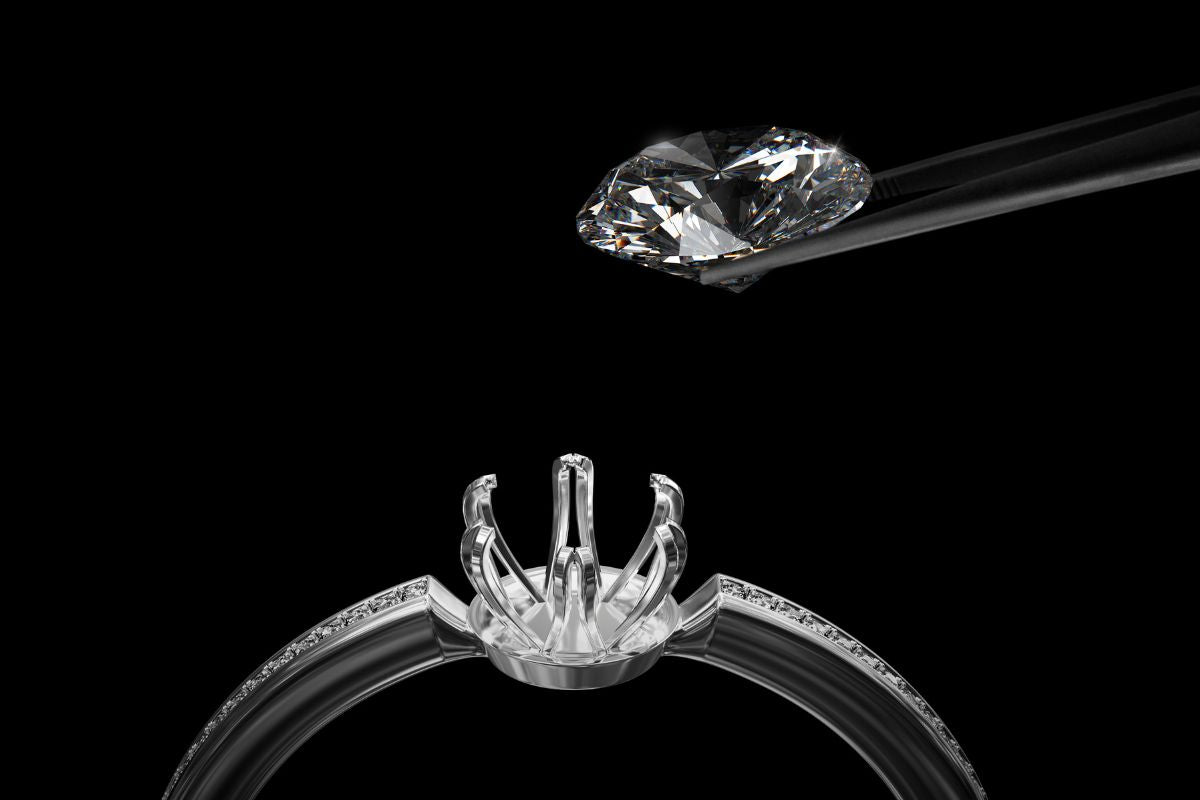
When choosing a setting for a diamond or gemstone, I consider the security that claw and round prongs offer. Claw prongs are distinguished by their pointed ends, designed to grasp the crown or upper part of the stone securely. They are especially useful for stones with corners, like princess-cut diamonds, as they can protect these vulnerable spots from chipping.
Round prongs, on the other hand, are characterized by their circular shape, which wraps around the girdle of the stone. This kind of prong allows for maximum visibility of the stone. Round prongs are less likely to snag on fabrics compared to the pointed nature of claw prongs, albeit offering a different level of security.
Here's a quick reference:
|
Prong Type |
Security Benefit |
Ideal for |
|
Claw Prongs |
Firm hold; protections for corners |
Stones with corners |
|
Round Prongs |
Less snagging; increased stone visibility |
Rounded stones |
Both types of prongs must be checked periodically—regardless of their shape—to ensure the center stone remains well-secured in my jewelry. It's important to ensure that the metal of the prong is not worn down or bent, as this could compromise the gemstone's security.
In terms of protection, prongs play a crucial role in shielding the girdle of the stone, which is one of the most delicate parts that could be prone to chips or breakage. With this in mind, I always make sure that the prongs on my jewelry cover enough of the stone's surface without obscuring its brilliance.
Design and Aesthetic Considerations

When choosing between claw prongs and round prongs in jewelry, it's important to consider how they affect the piece's design and aesthetics. These elements contribute significantly to the item's overall appeal and how it compliments personal style.
Visual Appeal and Metalwork
Claw prongs offer a distinctive look due to their pointed design, often add a touch of modernity. My metalwork is precise, ensuring that each claw prong's tip is finely crafted to enhance the stone's appearance without overwhelming it. Round prongs, by contrast, blend a minimalist vibe with classic elegance. They gently curve over the stone, promoting a smooth and unobtrusive design.
- Claw Prongs: Sharp, edgy, contemporary
- Round Prongs: Soft, classic, timeless
Prong Shape Influence
The shape of prongs not only contributes to the security of the gemstone but also to the ring's aesthetic. Claw prongs, resembling talons, evoke sophistication and are frequently used to add elegance and grace to the design. Round prongs evoke a sense of traditional craftsmanship, providing a subtle framing that is often viewed as timeless and universal.
- Claw Prongs: Sophisticated, elegant
- Round Prongs: Timeless, universally appealing
Cultural and Historical Context
Prong shapes also embody cultural and historical significance, which informs styling and audience preference. Claw prongs might be seen as more avant-garde, aligning well with those looking for an edge in their adornment. In contrast, round prongs tend to be viewed as reminiscent of classic jewelry pieces, offering a nostalgic charm that resonates across generations.
- Claw Prongs: Avant-garde, aligned with modern trends
- Round Prongs: Nostalgic charm, connected to jewelry history
Comparing Claw and Round Prongs

| Aspect | Claw Prongs | Round Prongs |
|---|---|---|
| Appearance | Claw prongs offer a more delicate and intricate look, allowing more visibility of the diamond. | Round prongs provide a classic and traditional appearance, offering more metal coverage around the diamond. |
| Security | Claw prongs may provide less security as they expose more of the diamond, potentially increasing the risk of damage or loss. | Round prongs offer greater security as they provide more metal coverage, holding the diamond firmly in place. |
| Comfort | Claw prongs may catch on clothing or objects due to their protruding nature, potentially causing discomfort. | Round prongs are generally smoother and less likely to catch on clothing or objects, offering more comfort. |
| Style | Claw prongs are often preferred for modern and contemporary designs, adding a unique touch to the ring. | Round prongs are suitable for classic and timeless styles, complementing various ring designs. |
In evaluating different prong settings, I find it crucial to consider how claw and round prongs affect the visibility and security of gemstones in jewelry. Here's how the features and benefits of these prong types compare.
Advantages of Claw Prongs
Claw prongs, often referred to as V-prongs or claw settings, are admired for their sharp, pointed appearance which offers a secure grip on gemstones. My examination of claw prongs reveals:
- Security: They excel at holding even the most delicate of gemstones in place, especially beneficial for stones with pointed corners.
- Aesthetic Sharpness: The pointed ends of a claw prong setting create a refined and elegant look around the crown of the diamond or gemstone.
- Enhanced Stones: The minimal contact of claw prongs with the stone can magnify visibility, allowing more of the stone to be seen and potentially enhancing its brilliance and sparkle.
However, one must be mindful that sharp edges on claw prongs can catch on fabrics, which might lead to wear or damage over time.
Benefits of Round Prongs
Round prongs, on the other hand, are known for their classic rounded ends that smoothly stretch over the girdle of gemstones. As I delve into the benefits of rounded prongs, they include:
- Durability: Rounded prongs are designed to minimize catching and snagging, making them a less intrusive and more durable option in the daily wear and tear.
- Light Optimisation: Rounded prongs may allow more light into a diamond than claw prongs, potentially boosting the stone's sparkle and overall brilliance.
- Versatility: They are versatile and can be used in various settings, including the popular double prong setting, offering both strength and aesthetic adaptability.
It's important to balance the increased light entry against the notion that rounded prongs, covering slightly more surface area, could obscure a small portion of the gemstone compared to claw prongs.
The Impact of Prong Selection on Light and Brilliance
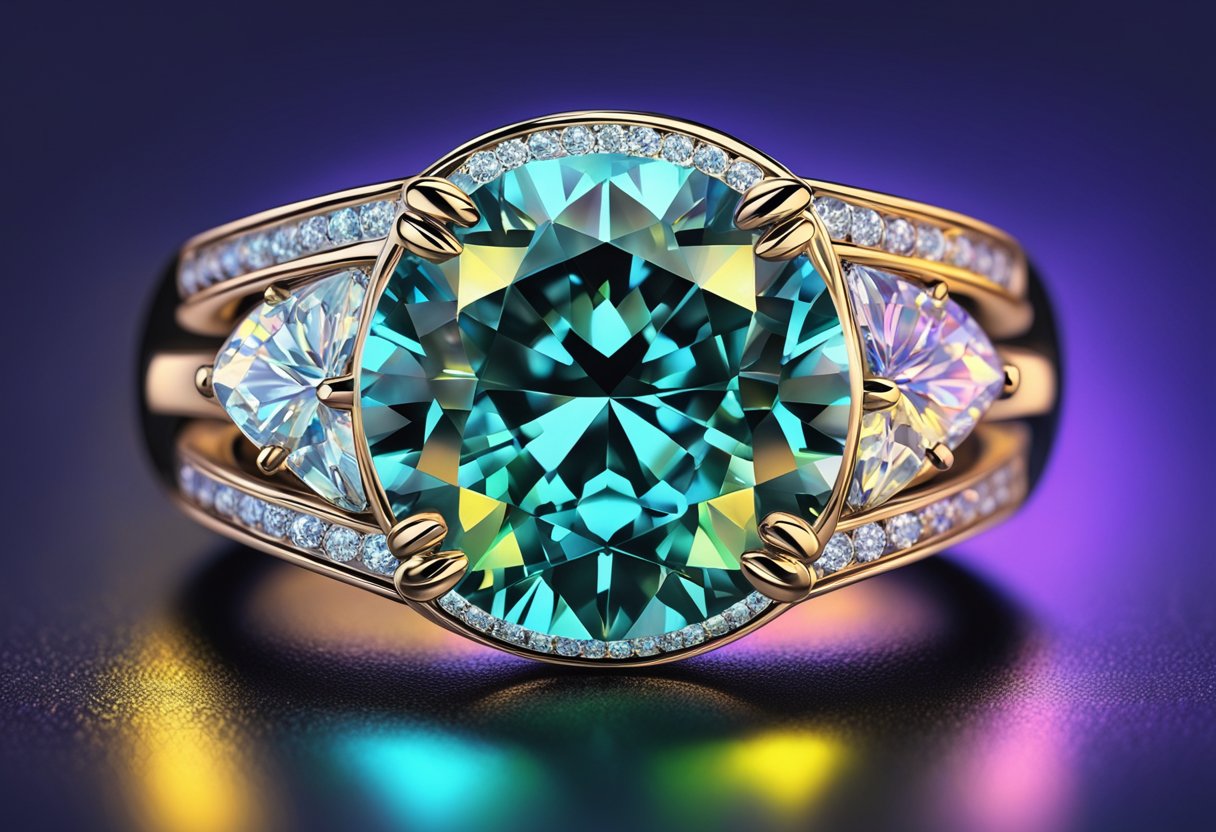
When choosing prongs for a diamond or gemstone setting, I know that the shape and design can significantly affect how light interacts with the stone. Light performance, especially brilliance, is central to a stone’s beauty, where brilliance refers to the intensity of the white light reflected back to the eye.
Claw prongs are shaped with a pointed end—they resemble extended claws. The advantage of this design is that it minimizes the metal coverage, allowing more light to enter and exit the stone. This characteristic maximizes the sparkle of the diamond, particularly beneficial for fancy cuts which rely on precision and open space to radiate their unique sparkle.
On the other hand, round prongs often feature a more domed end, enveloping the diamond to ensure it’s securely mounted onto the setting. While they offer robust protection, this prong shape may potentially block some light that could enter the stone. However, they are designed to support the stone without overshadowing its natural brilliance.
For stones with a multitude of facets, such as round or princess-cut diamonds, the preservation of light return is crucial. Prong selection here influences not just the security of the stone, but also the degree of overall brilliance.
Whether one is dealing with round diamonds, fancy cuts, or different gemstone shapes, the choice of prong style makes a subtle yet significant difference in light performance. My approach is to weigh the aesthetic desires against the functional need for light maximization, maintaining a balance that celebrates the stone's inherent sparkle and brilliance.
Practical Considerations and Maintenance

When considering claw prongs and round prongs, I think it's essential to reflect on their durability and maintenance needs to help inform your choice. Both styles possess unique properties influencing their lifespan and the attention they require over time.
Prong Durability and Longevity
In my experience, prong durability is a critical aspect of ring maintenance. Claw prongs tend to have pointed ends that may catch on fabric and are potentially more prone to wear over time due to their finer structure. They may require more frequent checks to ensure that the prongs haven't bent or worn down. On the other hand, round prongs typically offer more contact area with the gemstone and can be slightly more resilient thanks to their flattened, rounded tip. This doesn't imply they're immune to wear, but they might retain their form longer.
Claw Prongs:
- More susceptible to catching and bending
- May wear down faster; check regularly
Round Prongs:
- Generally more robust due to round shape
- Sustain form longer but still need periodic inspection
Ease of Retipping and Repair
Retipping or repairing prongs is an integral part of ring maintenance. If I notice wear or damage, addressing the issue promptly can prevent gemstone loss. Claw prongs, with their intricate and precise shape, can be more challenging to retip because of their design. A skilled jeweler must ensure that the new tip seamlessly blends with the ring's aesthetic without compromising the stone's security. Round prongs are often easier to repair due to their less complex shape. An expert jeweler can usually retip them without significantly altering the ring's appearance.
- Claw Prongs: Retipping requires careful craftsmanship.
- Round Prongs: Generally simpler and less costly to repair.
Always consider the availability of a lifetime warranty for your ring, as this can mitigate the long-term cost and hassle of maintenance. The choice between claw and round prongs should not only reflect aesthetic preference but also the reality of wear and care over the lifetime of your jewelry.
Ring and Prong Setting Types
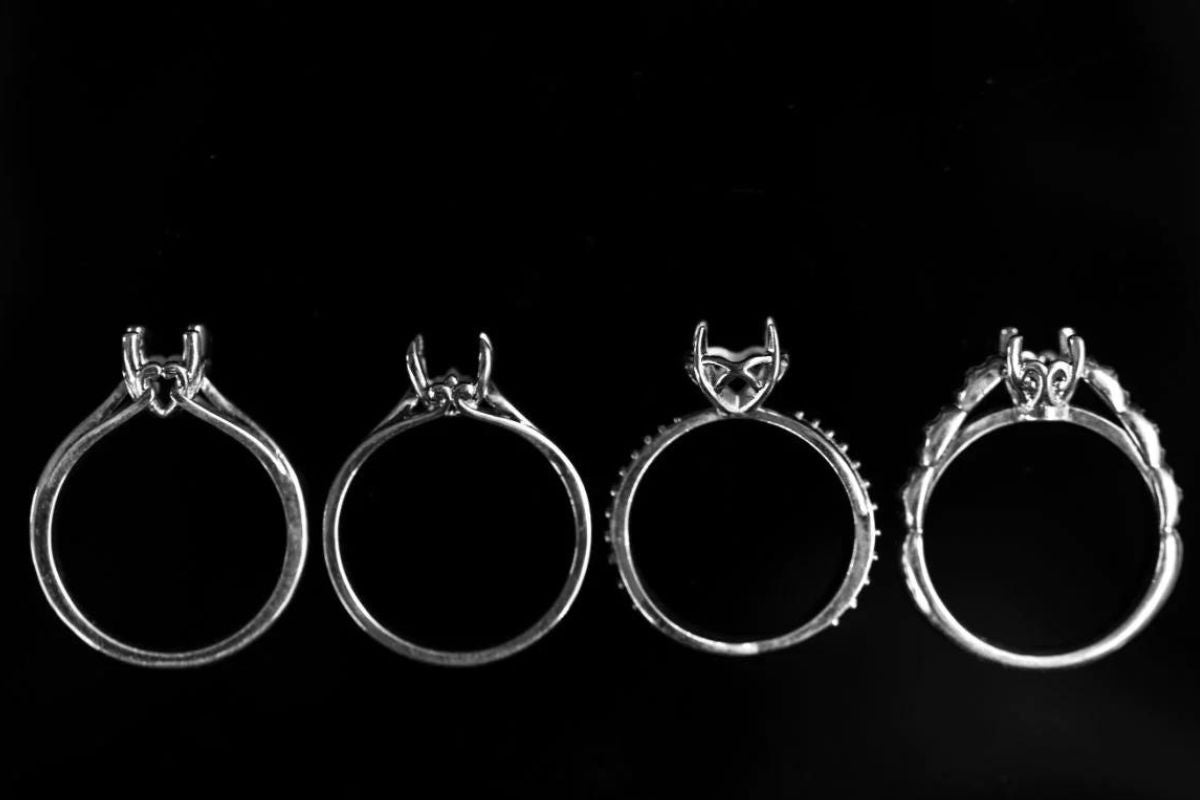
In selecting the perfect engagement ring, the setting is just as crucial as the stone. Prong settings, especially for diamond engagement rings, come in varied forms to enhance the diamond's beauty and ensure its security on the band.
Solitaire Engagement Rings
Solitaires are quintessential engagement rings defined by a single diamond mounted on a simple, elegant band. The solitaire setting often employs either a Tiffany setting, which is a type of six prong setting, or a four-prong setting. Here's how they differ:
-
Tiffany setting: Invented by Tiffany & Co., this setting elevates the diamond well above the band using long, slender prongs that allow maximum light exposure to the stone. Typically, it uses six prongs, giving the diamond a secure mount and less likelihood of snagging compared to fewer prongs.
-
Four-prong setting: Provides an unobstructed view of the diamond by using fewer prongs. This can make the diamond appear larger and allows more light to enter from different angles. It is commonly chosen for round cut diamonds to maximize their brilliance.
Multi-Stone and Fancy Cut Options
When multiple stones or fancy cuts like princess, radiant, emerald, marquise, or heart-shaped diamonds come into play, the setting styles expand to accommodate these designs:
-
Shared prongs: Diamonds set close together share prongs in this setting, allowing for a more seamless flow of light between the stones. This style is often used in eternity bands or side stones in an engagement ring.
-
Bezel: A metal rim encircles the perimeter of the diamond. This is especially popular for fancy cuts, providing a smooth, sleek edge and extra protection.
-
Double Claw Prongs: With this design, each prong splits into two, embracing fancy cut diamonds like princess, radiant, or emerald cut for both aesthetic appeal and increased security.
-
Cathedral setting: This style arches up from the band, creating a 'cathedral' like support structure for the diamond. It's a choice that merges both drama and protection, which can be suitable for fancy cuts.
In choosing between claw prongs and round prongs, it boils down to personal taste and the diamond's shape. Claw prongs, often used in a six-prong setting, are thought to be slender and can make a diamond appear more elongated, which is perfect for stones like marquise or pear cuts. In contrast, round prongs, with their softer look, complement round cut stones well.
Assessing Comfort and Wearability
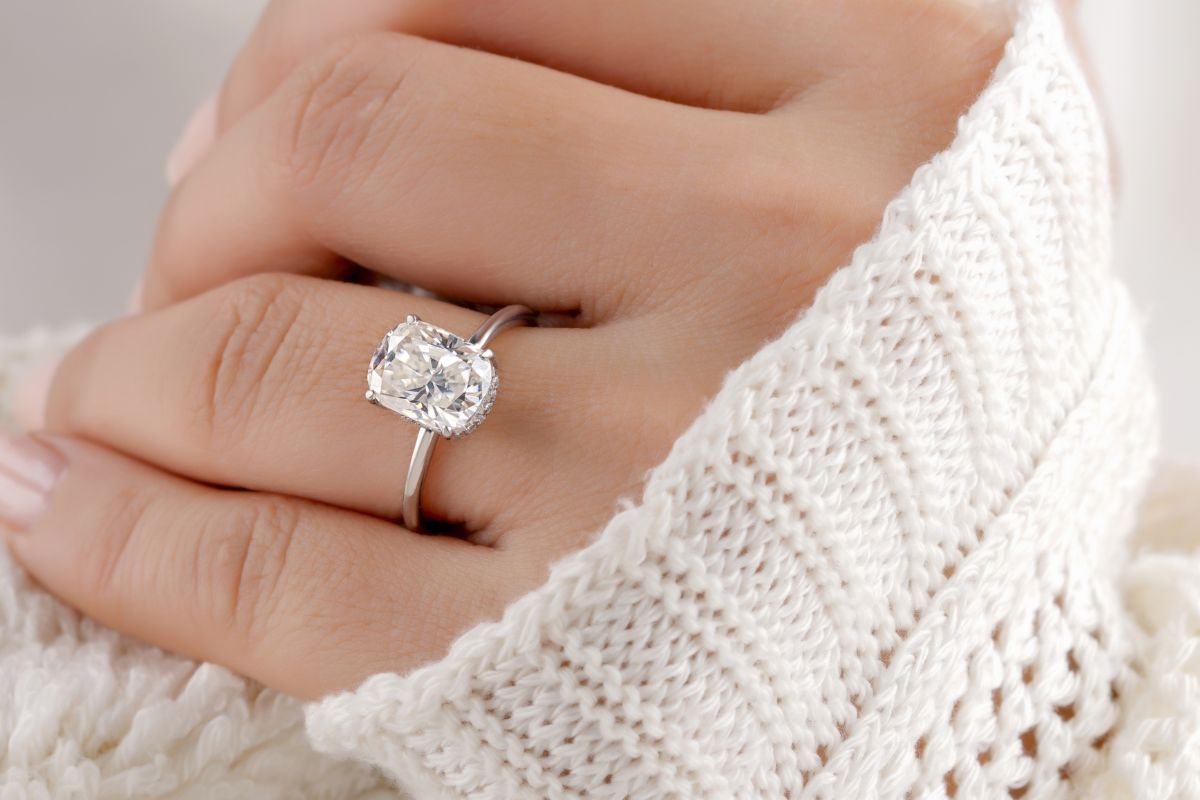
When evaluating the comfort and wearability between claw and round prongs, I consider several factors. One of the most notable concerns is the potential for a setting to snag or catch on fabrics. Claw prongs, often V-shaped or pointed, can be more susceptible to catching on materials due to their sharper edges. On the other hand, round prongs, known for their smoother, rounded edges, typically present less of a problem when it comes to snagging clothing or hair.
From a wearability standpoint, comfort is key. Some individuals find the minimalistic look and feel of round prongs more comfortable for daily wear, as they are less intrusive and have a lower profile. Conversely, while the more delicate appearance of claw prongs is often desired for its aesthetic, these pointed prongs may sometimes be felt more prominently on the skin, depending on their size and how they are set.
Here's a brief comparison of the two styles:
-
Claw Prongs:
- More pointed edges
- Potentially more prone to snagging
- Can offer a delicate and elegant appearance
-
Round Prongs:
- More rounded edges
- Typically more secure and less likely to catch on materials
- Favored for comfort and a minimalistic look
Ultimately, the choice between claw and round prong styles boils down to personal preferences. Some may prioritize the graceful appearance of claw prongs despite the potential snagging, while others may prefer the comfort and versatility of round prongs for everyday wear. Each design has its merits, and I suggest considering both aesthetic desires and practicality when deciding on the ideal prong setting.
Cost Implications of Prong Choices
When choosing between claw prongs and round prongs for a ring setting, affordability is a key factor. In my experience, costs can vary based on several aspects such as the amount of precious metal used and the complexity of the design. Here's how gold and platinum choices play into the budget:
Gold:
- Claw Prongs: They often require more gold to create their extended coverage.
- Round Prongs: Typically use less gold, potentially making them more budget-friendly.
Platinum:
- Although a more durable and dense material, platinum increases the overall price.
- Claw Prongs in Platinum: A higher initial cost due to more metal being used.
- Round Prongs in Platinum: A moderately priced option that balances security with affordability.
I've observed claw prongs usually are priced higher, given their intricate design and the need for skilled craftsmanship. However, depending on the jeweler, the cost difference between claw and round prongs can sometimes be minimal.
Price Comparison Example:
|
Setting Type |
Material |
Estimated Cost Range |
|
Claw Prongs |
Gold |
$800 - $1000 |
|
Round Prongs |
Gold |
$600 - $800 |
|
Claw Prongs |
Platinum |
$1000 - $1200 |
|
Round Prongs |
Platinum |
$800 - $1000 |
These are estimated ranges, and actual prices can differ based on current market rates for gold and platinum. When making my own choice, I consider not only the aesthetic and durability but also how either type of prong fits into my budget.
Customization and Personal Style

When I'm considering the aesthetic and practical elements of jewelry, especially solitaire engagement rings, the choice between claw prongs and round prongs plays a significant role in personalizing the piece. Preferences vary widely, but here’s how these options might align with different styles:
- Claw Prongs: These add an edgy touch to my ring's design. Their angular shape can complement the gemstone's geometry, making them a popular choice for intricate custom designs. A double claw prong setting might be my preference if I aim for a unique twist on the classic look.
- Round Prongs: Opting for round prongs means choosing a timeless and subtle framework for my gemstone. These are often seen in traditional settings and could be the best choice if I prefer a more understated style.
In terms of customization:
- Gemstone Shape: My choice here informs the number of prongs I might want; certain gemstone shapes may be better suited to the security offered by claw prongs, while others look more harmonious with round prongs.
- Metal Prongs: My selection of metal for the prongs can influence the overall look significantly. While some metals are more malleable and easier to shape into delicate claw prongs, others might lend themselves to the sturdier round prongs.
Retailers like James Allen offer extensive customization options, allowing me to visualize and choose the perfect combination of these elements to match my personal style. Whether I lean towards the bold and distinctive or the classic and minimalistic, understanding these prong styles is key to creating a piece that feels uniquely mine.
Jeweler and Brand Considerations
When I select between claw prongs and round prongs, I always consider the jeweler's expertise and the brand's reputation. Here's my guide to what to look out for:
-
Jeweler's Expertise: A skilled jeweler's craftsmanship can make a significant difference in the durability and appearance of prong settings. I prefer jewelers who showcase meticulous attention to detail, ensuring that progs, whether claw or round, are secure and aesthetically pleasing.
-
Brand Reputation: I value brands known for their quality and service. Brands like James Allen are reputed for offering a lifetime warranty, which speaks volumes about their confidence in the longevity of their settings, including prong types.
-
Versatility: When comparing prong settings, I ponder the versatility offered by the jeweler or brand. The setting should complement various stone shapes and sizes without compromising the stone's security.
Tips for Choosing:
- Look for certifications and reviews to assess a jeweler or brand.
- Consider the maintenance and wearability of the setting offered by the brand.
- Inquire about customizability options from the jeweler to meet your preference.
Table Example:
|
Consideration |
Claw Prongs |
Round Prongs |
|
Security |
Good with a reputable jeweler |
Often more secure |
|
Aesthetics |
Edgy, can be elegant |
Minimalist |
|
Versatility |
Depends on jeweler's skill |
Generally more versatile |
|
Maintenance |
Check brand's warranty policies |
Usually requires less care |
By focusing on these considerations, I ensure that my jewelry choice aligns with both my personal style and practical needs.
Frequently Asked Questions
In this section, I cover some of the most common inquiries about claw and round prong engagement ring settings. I aim to clarify how they differ in aesthetics, functionality, and suitability for various gemstones.
How do claw prongs affect the appearance of a diamond compared to round prongs?
Claw prongs, with their pointed design, can enhance the perceived sharpness and brilliance of a diamond, giving it an edgier look. Round prongs, on the other hand, are more subtle and can complement the diamond's shape without adding extra prominence.
What are the advantages and disadvantages of claw prongs versus round prongs for ring settings?
Claw prongs offer a secure grip and can highlight the cut of the stone more effectively. However, they may snag on fabrics more easily than round prongs. Round prongs offer a sleek look and are less likely to catch on clothing, but they may cover more of the stone's surface.
Can the choice of prong type impact the security of the stone in a ring?
Yes, the prong type can influence the stone's security. Claw prongs tend to have a stronger grip because of their shape, which can provide extra security for the stone. Round prongs, if not crafted properly, might be more prone to wear and the risk of the diamond becoming loose.
How does a petite claw prong setting differ from traditional prong settings?
A petite claw prong setting features smaller and finer prongs compared to traditional settings, minimizing the metal's visibility and allowing the stone to stand out more. This can be particularly flattering for smaller stones.
In what ways do V-prong settings provide benefits for certain types of gemstones?
V-prong settings offer added protection for gemstones with points or corners, such as marquise, princess, or pear-shaped stones. The V shape guards these vulnerable areas against chipping and snagging.
What should be considered when choosing between talon prongs and rounded prongs?
When choosing between talon (another name for claw) and rounded prongs, consider the diamond's size, shape, and style preference. Talon prongs can make a stone appear larger and more pronounced, while rounded prongs offer a smoother and more classical look. It's also essential to think about daily practicality and the longevity of the setting.
Checkout some of our top collections:
Leave a comment
Please note, comments must be approved before they are published.

